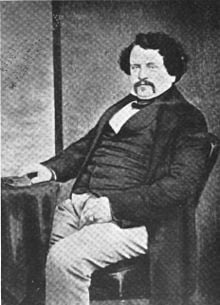In this article we will try to answer who invented cement by exploring its history and development. The history of cement or cementing material is as old as the history of construction. It is nearly impossible to construct a structure without using a cementing material.
Early history and invention of cement
Some kind of cementing materials were used by Egyptians, Romans, Indians and Greeks in their ancient constructions. It is believed that the early Egyptians used the cementing materials produced by burning gypsum. From an analysis of mortar from the Great pyramid showed that it contained 81.5 % of calcium sulphate and only 9.5 % carbonates. That can be regarded as first invention of the primitive form of cement.
The early Greeks and Romans used cementing materials obtained by burning lime stones. The remarkable hardness of the mortar used in early roman brick-works demonstrates the perfection and quality of the cementing material they used on those days. The superiority of Roman mortar has been achieved by thoroughness of mixing and long continued ramming.
Discovery of Pozzolana
The Greeks and Romans later became aware of the fact that certain volcanic ash and tuff, when mixed with lime and sand yielded mortar possessing superior strength and better durability in fresh or salt water. It is found that, Roman builders used volcanic tuff found at Pozzuoli village near Mount Vesuvius in Italy. This volcanic ash was mostly siliceous in nature thus acquired the name Pozzolana for cementing material. Later on the name Pozzolana was adopted to any other material, natural or powdered artificial, having nearly the same composition as that of volcanic tuff or ash found at Pozzuoli. The Romans in the absence of natural volcanic ash used powdered tiles, or pottery as Pozzolana. If we trace back to India, a powdered brick named Surkhi has been widely used in mortar. Durability of structures in India was achieved by through mixing and long continued ramming of lime mortar with or without the addition of Surkhi.
When comes to more recent times, the investigations carried out by John Smeaton to rebuild the Eddy stone Light-house in 1756, immensely contributed to the modification of modern cement. He made extensive enquiries about the existing buildings to find out the best quality material to withstand action of salt water. Finally he concluded that, lime-stones which contains considerable proportion of clayey matter, yielded better and superior hydraulic properties.
Invention of modern cement
The history of modern cement begins from the investigations of L J Vicat. He prepared an artificial hydraulic lime by calcining an intimate mixture of limestone and clay. This process is widely regarded as the leading knowledge to the manufacture of modern-day Portland cement. But the story of the invention of Portland cement is however attributed to Joseph Aspdin, a Leeds builder and bricklayer, even though similar procedures had been adopted by other inventors. Joseph Aspdin acquired the patent for Portland cement on 21st October 1824.

The name Portland was given to the cement because of its resemblance to natural stone occurring at Portland in England. In his process Aspdin mixed a fine powder of lime stones and finely divided clay into the form of slurry and calcined it in a furnace similar to a lime kiln till the CO2 from the mixture was expelled. The mixture was again ground to a fine powder. He used a temperature lower than the clinkering temperature. Because later in 1845, Isaac Charles Johnson burnt a mixture of clay and chalk till the clinkering stage to make it better cement and established factories in 1851.
History of cement manufacturing in India
In India, Portland cement was first manufactured in 1904 near Madras by South India Industrial Ltd. But this venture was a failure. Later in 1912, the Indian Cement Co. Ltd., was established at Porbander (Gujarat). By the end of 1914 this Company was able to deliver about 1000 tons of Portland cement. By 1918 three more factories were established. Together they were able to produce about 85000 tons of cement per year in India. During first five year plan (1951-1956), cement production in India increased from 2.69 million tons to 4.60 million tons. By 1969 the total production of cement in India was 13.2 million tons and India became 9th largest producer of cement in the world.
Prior to the manufacturing of Portland cement in India, it was imported from UK. Hence only few reinforced concrete structures were built with imported cement. A three storied structure built in Byculla, Bombay was one of the oldest RCC structures in India.
